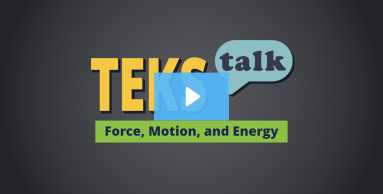
Knowledge and Skills Statement
Provide students with a selection of materials they might use to conduct a descriptive investigation. Some suggestions include balls, toy cars, carts, magnets, and magnetic objects. Then have students plan and conduct their descriptive investigation. Some examples of pushes or pulls that change an object's motion might be a person pushing or stopping a ball, a person pulling a string attached to a cart, or a toy car bumping into a ball and causing it to roll. Students should plan the investigation, but may be provided an example as inspiration. By providing a list of available materials, the teacher is able to guide students and provide some ideas about how to design the investigation, but still ensures that the students have the opportunity to develop their own investigations.
Research
Wilcox, Jesse, Naryah, Moore, Sarah Nolting, Courtney Reyna, and Caitlyn Potter. “Don’t Force It! Using Guiding Questions to Scaffold Kindergartner’s Thinking of Pushes And Pulls.” Science and Children 59, no. 2 (2021): 33-37.
https://www.jstor.org/stable/27133371.
Summary: Teachers need to use questioning strategies, and this article gives examples of how to do so when teaching the concept of push and pull. It states that teachers should avoid using "yes" or "no" questions instead of focusing on using age-appropriate open-ended questions. Physical examples are important when presenting a push-and-pull activity, specifically using everyday examples, like children playing with sleds. Probing questions can help students predict what will happen and what will make an object move faster or slower. Teachers should have students predict what will happen if different variables are changed. Asking effective questions can help students generate ideas about force and motion.
